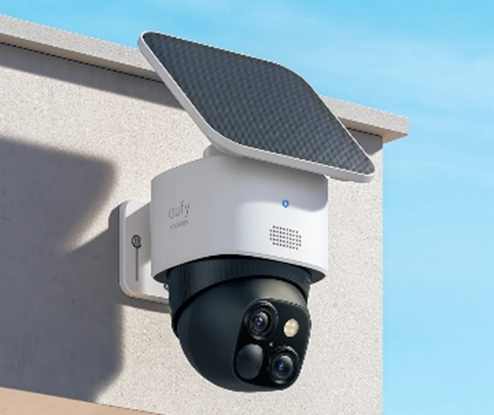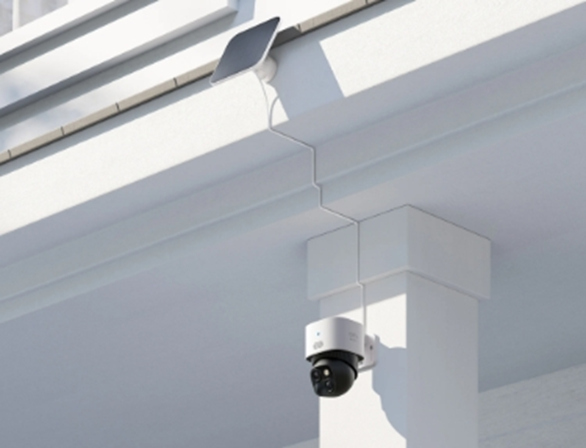Security and surveillance have become essential for both homes and businesses. PTZ (Pan-Tilt-Zoom) cameras offer unmatched flexibility, allowing remote control to monitor large areas. But their effectiveness heavily depends on proper installation. One of the most common dilemmas is whether to mount them on ceilings or walls. Each option has distinct advantages and challenges that affect coverage, durability, and performance. In this article, we’ll explore the pros and cons of ceiling and wall mounting, key installation requirements, and performance considerations to help you make the best choice.

Ceiling Mount Advantages
Mounting a PTZ camera on the ceiling provides several benefits, especially for indoor spaces with high traffic. The elevated position offers a wide, unobstructed view, minimizing blind spots. Since ceilings are usually centrally located, the camera can pan and tilt freely to cover more area without physical barriers. Another advantage is discretion. Ceiling-mounted cameras are less noticeable compared to wall-mounted ones, making them harder to tamper with. Many modern PTZ cameras have compact designs that blend seamlessly with ceiling fixtures, maintaining aesthetics while ensuring security. However, ceiling mounting isn’t perfect for every scenario. In rooms with very high ceilings, the camera’s viewing angle might be too steep, reducing facial recognition clarity.
Wall Mount Benefits
Wall mounting is another popular option, particularly for outdoor surveillance or rooms where ceiling installation isn’t feasible. A wall-mounted PTZ security camera provides a more direct, eye-level view, which is crucial for identifying faces or license plates. One major advantage of wall mounting is stability. Walls, especially those made of brick or concrete, offer strong structural support, reducing vibrations that could affect video quality. Unlike ceiling mounts, wall brackets often allow for easier adjustments in tilt angles, ensuring precise alignment with the area you want to monitor. Wall-mounted PTZ cameras also simplify maintenance. Since they’re at a reachable height, cleaning the lens or adjusting settings is more convenient compared to ceiling-mounted units.

Installation Requirements
Ceiling Load Capacity: Ensuring Structural Support
Before installing a PTZ camera on the ceiling, verifying load capacity is critical. Most ceilings are designed to hold light fixtures, but PTZ cameras—especially motorized models—can be heavier. Check the ceiling’s material: drywall may require heavy-duty anchors, while concrete or wooden beams offer better support. If unsure, consult a professional to avoid long-term sagging or collapse. Another consideration is vibration. In environments with heavy machinery or frequent foot traffic, ceiling-mounted cameras may experience slight shaking, leading to blurred footage. Reinforcing the mount with anti-vibration pads or choosing a location away from high-activity zones can mitigate this. Always use the manufacturer-recommended screws and brackets to ensure the camera stays securely in place.
Wall Material Considerations: Brick vs Drywall Anchors
Walls vary in material, and each requires different mounting techniques. Brick or concrete walls provide excellent stability but may need masonry drills and anchors for a secure fit. On the other hand, drywall is easier to drill into but lacks inherent strength—using toggle bolts or hollow-wall anchors is essential to prevent the camera from pulling loose over time. For outdoor installations, ensure the wall can withstand weather exposure. Metal brackets should be corrosion-resistant, and seals around drill holes prevent moisture seepage. Always position the camera high enough to avoid tampering but low enough to maintain a clear sightline. Pre-installation checks save time and prevent costly rework.
Cable Management: Concealing Wires for Both Options
Exposed wires are not only unsightly but also vulnerable to damage. For ceiling mounts, running cables through conduits or above drop ceilings keeps them hidden and protected. In-wall cable kits are ideal for a professional finish, though they may require cutting into drywall. Wall-mounted cameras benefit from PVC trunking or paintable wire covers that blend with the wall color. Outdoor installations demand waterproof cable connectors and UV-resistant conduits to prevent weather damage. Regardless of the method, proper cable management enhances durability and reduces tripping hazards.
Performance Differences
IR Reflection Issues: Surface Material Impacts Night Vision
PTZ cameras with infrared (IR) night vision can suffer from reflection problems if mounted too close to walls or ceilings. Light-colored or glossy surfaces bounce IR light back into the lens, causing overexposure or “whiteout” effects. To avoid this, position the camera at least a foot away from nearby surfaces or use an extended bracket. Outdoor cameras facing brick or stucco walls may also experience IR reflection. Testing the camera at night before finalizing the mount helps identify and correct these issues. Some models offer adjustable IR intensity or removable IR cut filters to optimize performance in challenging environments.
Weatherproofing Needs: Outdoor Mounting Specifics
Outdoor PTZ cameras require robust weatherproofing. Ceiling mounts under eaves offer some rain protection, but wall mounts may need additional hoods or housings in open areas. Look for cameras with an IP66 or higher rating, ensuring resistance to dust and heavy rain. In colder climates, heaters or defrosting features prevent snow buildup on the lens. Similarly, in windy regions, reinforced brackets minimize sway. Regular maintenance, like cleaning the lens and checking seals, prolongs the camera’s lifespan.
Conclusion
The ideal mounting location depends on your property’s layout and surveillance goals. Ceiling mounts excel in wide, indoor spaces, while wall mounts are better for targeted outdoor monitoring. Always assess structural support, cable management, and environmental factors before installation. For a quick decision, choose ceiling mounting if you need discreet, wide-angle coverage in a stable indoor environment.. and opt for wall mounting if you require direct views of entry points or outdoor areas with strong support. By weighing these factors, you’ll maximize your PTZ camera’s effectiveness and ensure long-term reliability.
